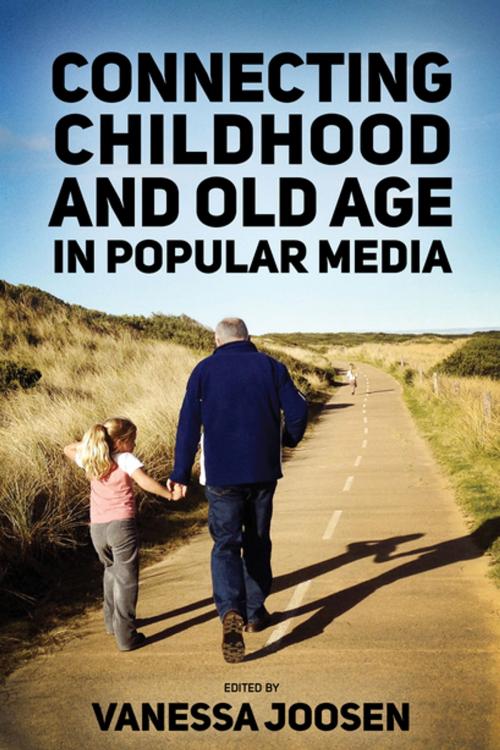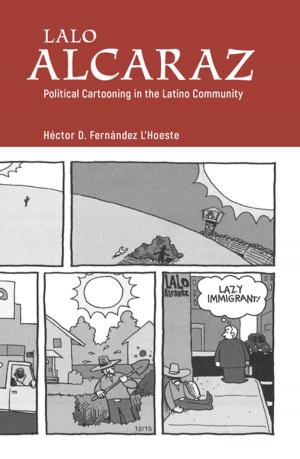Connecting Childhood and Old Age in Popular Media
Nonfiction, Social & Cultural Studies, Social Science, Gerontology, Cultural Studies, Popular Culture| Author: | ISBN: | 9781496815170 | |
| Publisher: | University Press of Mississippi | Publication: | January 19, 2018 |
| Imprint: | University Press of Mississippi | Language: | English |
| Author: | |
| ISBN: | 9781496815170 |
| Publisher: | University Press of Mississippi |
| Publication: | January 19, 2018 |
| Imprint: | University Press of Mississippi |
| Language: | English |
Contributions by Gökçe Elif Baykal, Lincoln Geraghty, Verónica Gottau, Vanessa Joosen, Sung-Ae Lee, Cecilia Lindgren, Mayako Murai, Emily Murphy, Mariano Narodowski, Johanna Sjöberg, Anna Sparrman, Ingrid Tomkowiak, Helma van Lierop-Debrauwer, Ilgim Veryeri Alaca, and Elisabeth Wesseling
Media narratives in popular culture often assign interchangeable characteristics to childhood and old age, presuming a resemblance between children and the elderly. These designations in media can have far-reaching repercussions in shaping not only language, but also cognitive activity and behavior. The meaning attached to biological, numerical age--even the mere fact that we calculate a numerical age at all--is culturally determined, as is the way people "act their age."
With populations aging all around the world, awareness of intergenerational relationships and associations surrounding old age is becoming urgent. Connecting Childhood and Old Age in Popular Media caters to this urgency and contributes to age literacy by supplying insights into the connection between childhood and senescence to show that people are aged by culture.
Treating classic stories like the Brothers Grimm's fairy tales and Heidi; pop culture hits like The Simpsons and Mad Men; and international productions, such as Turkish television cartoons and South Korean films, contributors explore the recurrent idea that "children are like old people," as well as other relationships between children and elderly characters as constructed in literature and media from the mid-nineteenth century to the present. This volume deals with fiction and analyzes language as well as verbally sparse, visual productions, including children's literature, film, television, animation, and advertising.
Contributions by Gökçe Elif Baykal, Lincoln Geraghty, Verónica Gottau, Vanessa Joosen, Sung-Ae Lee, Cecilia Lindgren, Mayako Murai, Emily Murphy, Mariano Narodowski, Johanna Sjöberg, Anna Sparrman, Ingrid Tomkowiak, Helma van Lierop-Debrauwer, Ilgim Veryeri Alaca, and Elisabeth Wesseling
Media narratives in popular culture often assign interchangeable characteristics to childhood and old age, presuming a resemblance between children and the elderly. These designations in media can have far-reaching repercussions in shaping not only language, but also cognitive activity and behavior. The meaning attached to biological, numerical age--even the mere fact that we calculate a numerical age at all--is culturally determined, as is the way people "act their age."
With populations aging all around the world, awareness of intergenerational relationships and associations surrounding old age is becoming urgent. Connecting Childhood and Old Age in Popular Media caters to this urgency and contributes to age literacy by supplying insights into the connection between childhood and senescence to show that people are aged by culture.
Treating classic stories like the Brothers Grimm's fairy tales and Heidi; pop culture hits like The Simpsons and Mad Men; and international productions, such as Turkish television cartoons and South Korean films, contributors explore the recurrent idea that "children are like old people," as well as other relationships between children and elderly characters as constructed in literature and media from the mid-nineteenth century to the present. This volume deals with fiction and analyzes language as well as verbally sparse, visual productions, including children's literature, film, television, animation, and advertising.















